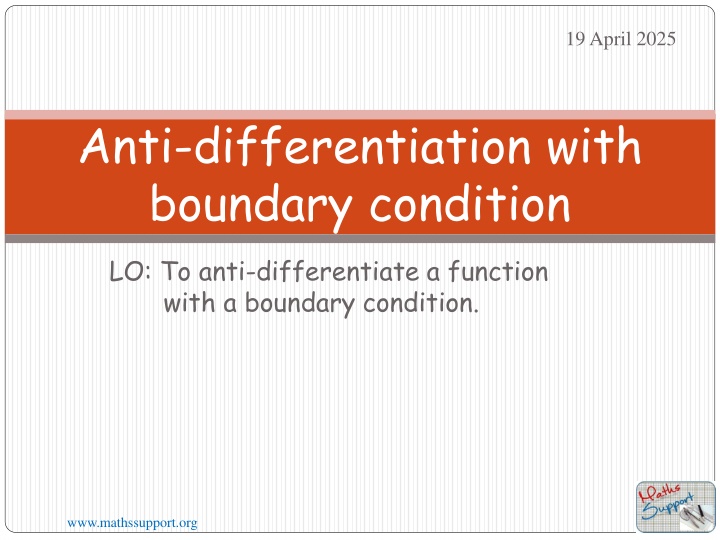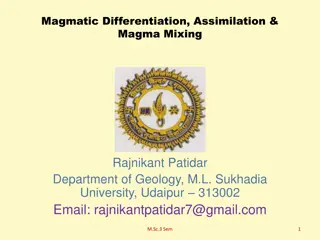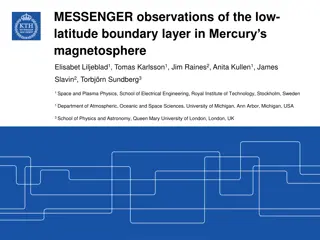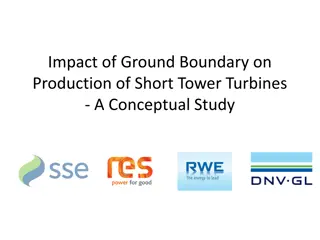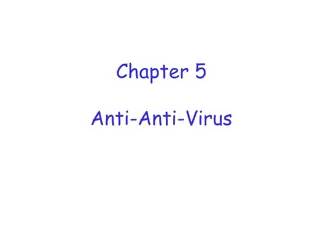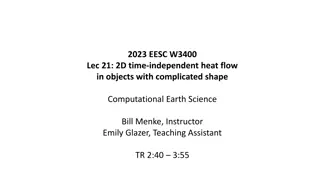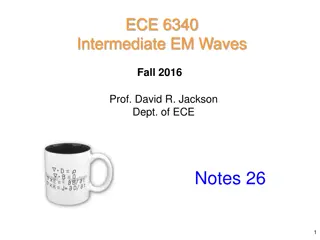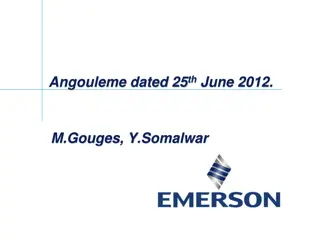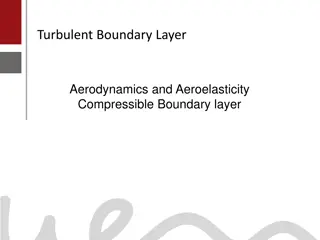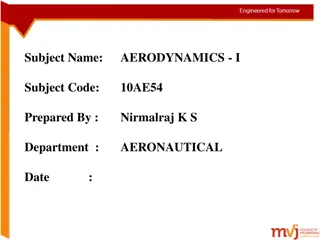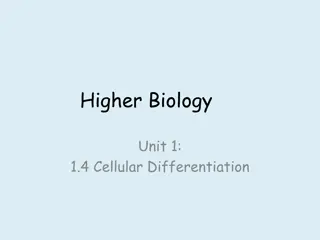Understanding Anti-differentiation with Boundary Conditions
Reversing the process of differentiation, anti-differentiation involves finding the indefinite integrals of functions with boundary conditions. Learn about rules to find indefinite integrals and apply them to real-world scenarios like calculating displacement and population growth. Explore examples and concepts related to anti-differentiation in mathematics.
Uploaded on Apr 19, 2025 | 1 Views
Download Presentation

Please find below an Image/Link to download the presentation.
The content on the website is provided AS IS for your information and personal use only. It may not be sold, licensed, or shared on other websites without obtaining consent from the author.If you encounter any issues during the download, it is possible that the publisher has removed the file from their server.
You are allowed to download the files provided on this website for personal or commercial use, subject to the condition that they are used lawfully. All files are the property of their respective owners.
The content on the website is provided AS IS for your information and personal use only. It may not be sold, licensed, or shared on other websites without obtaining consent from the author.
E N D
Presentation Transcript
19 April 2025 Anti-differentiation with boundary condition LO: To anti-differentiate a function with a boundary condition. www.mathssupport.org
Reversing the process of differentiation Antidifferentiation is also known as indefinite integration And is denoted with an integral symbol, ?? IfF (x) = f(x), we write ? ? ?? = ? ? + ? Constant of integration integrand Variable of integration Is read as: The antiderivative of fwith respect to x The integral of fwith respect to x ? ? ?? www.mathssupport.org
Rules to find the indefinite integrals Power rule 1 ? + 1??+1+ ?,? 1 ???? = Constant rule ??? = ?? + ?, Constant multiple rule ??(?)?? = ? ?(?)?? Sum or difference rule = ? ? ?? ? ? ?? ?(?) ?(?)?? www.mathssupport.org
Indefinite integrals The velocity of a moving object is given by v(t) = 2t + 1 Find an expression for the displacement in terms of t = 2 ??? + 1?? ?(?) = (2? + 1) ?? ?(?) = ?2+ ? + ? This is called the general solution for (2? + 1) ?? If the position of the object at time t = 1 is6we can find C ?(1) = 12+ 1 + ? 6 = 12+ 1 + ? 4 = ? The fact that the position at time t = 1 is6is called a boundary condition ?(?) = ?2+ ? + 4is a particular solution of (2? + 1) ?? www.mathssupport.org
Indefinite integrals Iff (x) = 3x2 + 2x andf(2) = -3, Findf(x) f (x) = 3x2 + 2x ?(?) = (3x2 + 2x) ?? ? ? = ?3+ ?2+ ? This is the general solution for (3x2 + 2x) ?? Use the fact that f(2) = -3 to find C ?(2) = 23+ 22+ ? 3 = 8 + 4 + ? 15 = ? ? ? = ?3+ ?2 15 www.mathssupport.org
Indefinite integrals The rate of growth of a population of fish is given by ?? ??= 150 ? for 0 t 5 years. The initial population was 200 fish. Find the number of fish att = 4 years. ?? ??= 150 ? The initial population was 200 means that at time t = 0, ?(0) = 200 ?(?) = 150 ? ?? 1 2 ?? Rewrite with rational exponents = 150? 3 2+ ? 3 2+ ? 1 2 ?? ?(0) = 100(0) = 150 ? 200 = 100(0) 3 2+ ? 3 2+ 200 3 2+ 200 General solution ?(?) = 100? 200 = ? Particular solution ?(?) = 100? FindPwhent =4 ?(4) = 100(4) ?(4) = 1000 There are 1000 fish when t = 4 years www.mathssupport.org
Thank you for using resources from A close up of a cage Description automatically generated For more resources visit our website https://www.mathssupport.org If you have a special request, drop us an email info@mathssupport.org www.mathssupport.org
